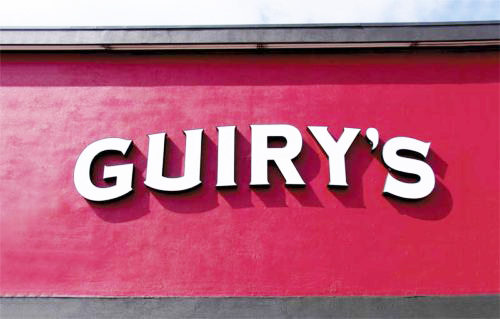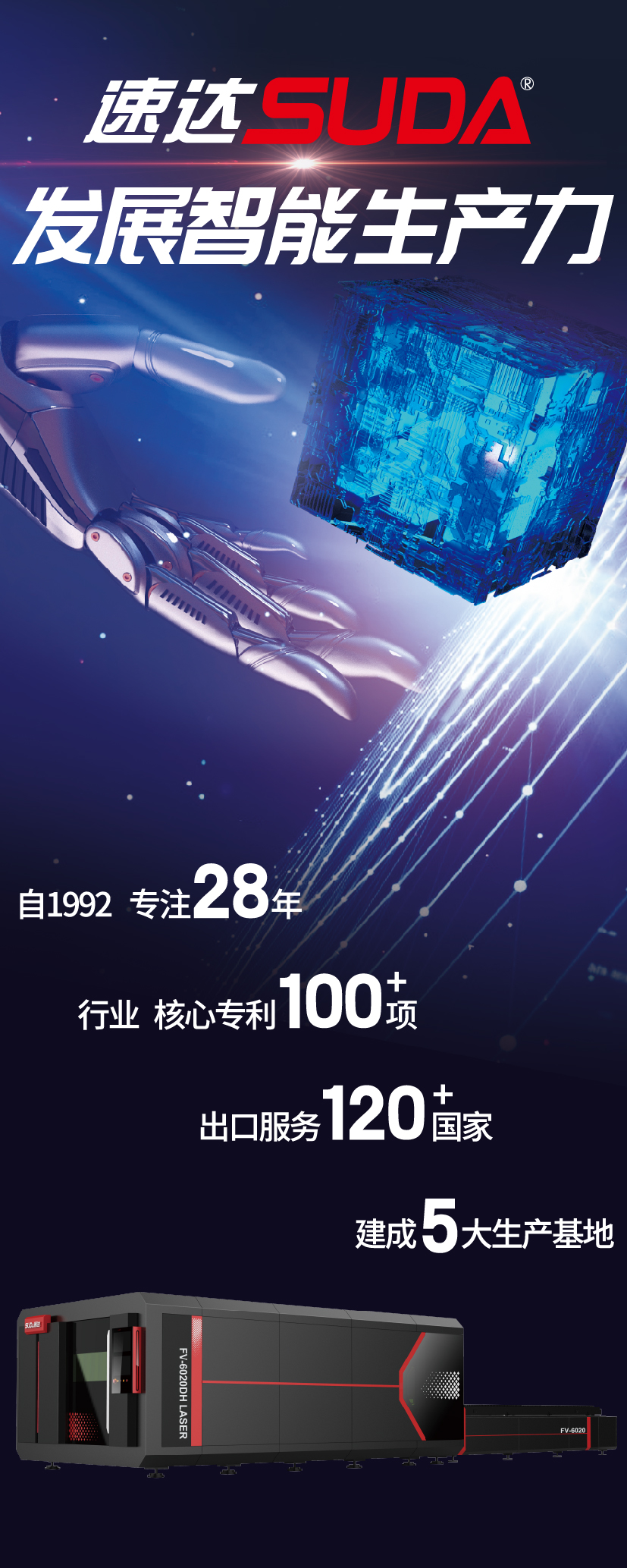
How does one define the term ‘problem client’ in the sign industry? There are many potential issues and irritations a customer can cause for—by way of example—an electrical sign project involving channel letters. The following are some of the warning signs:
在标识行业里,如何定义“问题客户”?与“问题客户”合作会有许多潜在麻烦,甚至还会有令人恼火的事情发生,譬如,一个涉及槽形发光字的电子标识项目。下面是一些预兆:
1. The customer takes up an excessive amount of the sign shop's time and attention; more than the project actually requires.
2. During the project, the customer causes an unusual amount of stress for the shop's owner and staff.
3. The customer is inflexible regarding the appearance of his/her artwork and logo, demanding that the sign must look “exactly like it does on the page.”
4. The project provides little chance of any future work; i.e. the location is probably the only one for which the sign will be produced.
1.顾客占用了太多的时间和注意力在店铺标识上,实际上并没有这么多的项目需求。
2.在制作标识过程中,店铺的老板和员工对于该项目的选择带着很大的压力。
3.客户非常固执,一定要让标识看起来和设计图纸上的完全一致。
4.此标识项目结束之后不会有后续的业务,因为这是唯一一次安装标识的机会。
It is important to note, by the way, there is nothing inherently wrong with clients not understanding the realities of signmaking. A client's lack of sign knowledge is not, in itself, a negative factor. Many complaints can be resolved by educating the customer.
顺便提一下,这里需要注意的是,客户不清楚标识制作的实际情况,这本身并没有什么问题。客户对标识专业知识的缺乏本身就不是一个负面因素。许多问题都可以通过对客户进行标识知识培训得以解决的。

Clients who insist on projecting their own lack of understanding on to a sign shop’s team, on the other hand, can quickly become a negative issue. The difference is these problematic customers (a) do not respect signmakers' competence and (b) will not leave them alone to conduct their work professionally.
如果客户坚持把他们所拥有的匮乏标识理论强加给标识制作团队,那么在某种程度上,这很快就会成为消极因素,从而导致不愉快的事情发生。造成这种情况的主要原因是:(a)这些问题客户不信任标识制作商的能力,(b)不会让他们独立专业地进行标识制作。
Such situations are emblematic of the types of clients with whom signmakers would certainly not be eager to do business. Nevertheless, some sign companies work with them anyway, going through a negative and time-consuming experience.
类似这种类型的客户,标识制作商都不想与其合作。然而,一些与其合作过的标识公司,都会有一次消极且浪费时间的经历。
Sometimes, they do not recognize the problem until it is too late. An alternative business practice would be to implement procedures to spot problem clients in advance and avoid the entire ordeal. The following are a few ideas to consider within this context.
有的时候,他们意识到这个问题的时候已经太晚了。因此进行可选择的业务实践项目能够提前发现问题客户,从而避免一次磨难。下面是一些避免类似问题发生的建议。
LEDdoublestroke
双行程LED模组

Internally illuminated channel letters rely on minimum stroke widths to accommodate light-emitting diodes (LEDs).
内部照明槽形发光字用最小的路径宽度,来适应于LED的应用。
Priorsignage experience
先前的标识制作经验
Any customer who has previously commissioned the fabrication and installation of an outdoor electrical sign has at least some experience that will be beneficial to his/her working relationship with other signmakers. While this level of experience is not the same as working within the sign industry, the customer will nevertheless have an idea of what is involved in a sign project.
任何一个之前参与过户外电子标识制作和安装过程的客户,至少都有一点经验,这对与其合作的标识制作商来说是有好处的。然而这点经验当然不能和标识行业内的专业经验相提并论,客户并不想了解标识项目中所包含的工作内容。
Inexperienced customers, on the other hand, may have no idea how much time and work will be involved when fabricating and installing a set of illuminated channel letters. Some are not even aware of the typical requirement for a sign permit. This lack of experience should be a red flag to signmakers, who may in turn need to explain the realities of the business.
无经验的客户可能不清楚,在制作安装一系列槽型发光字时需要花费的时间和精力。一些客户甚至不知道标识项目的标准需求。客户对标识制作经验的匮乏对标识制作商来说就是一个危险信号,他们可能需要向客户解释该标识制作项目的实际情况。
Worse yet are clients whose experience with other types of signs leads them to lump them all together in terms of expectations of how long a project will take. When a client complains, “Our window graphics didn't take this long,” he/she is wearing rose-coloured glasses with regard to the work involved in a professional outdoor electrical sign installation.
然而更糟糕的是,如果客户有一些其他类型标识制作经验的话,就会把对现有标识制作项目花费时间的期望与之前的混在一起。譬如我们最近接待的一位客户,她将现有标识制作项目与专业户外电子标识安装项目相比较,然后投诉道:“我们之前的窗口图文标识制作花费的时间并没有这么长。”
So, it is important to be wary of clients ordering their first-ever outdoor sign, as they may make unrealistic demands regarding the cost, timeframe and materials involved with such a project.
因此,充分了解客户对其第一个户外标识的要求是很重要的,因为他们可能对标识制作成本、时间安排和材料都有不切实际的要求。
Design knowledge and experience
标识设计的知识和经验
Another potential problem is the customer who has no knowledge of sign and/or logo design. Just as clients can be naïve regarding how much work is involved with producing and installing a sign, they may be equally out of touch regarding the generation and use of vector artwork files.
另外一个潜在问题是,客户对标识或商标设计图文完全不了解。就像他们天真的以为制作安装标识并不会花费很多精力一样,他们可能认为图片文件的清晰可读性并不重要。
The first-timer might even assume the sign shop will automatically supply new artwork among its standard services. This may be fine, provided the expectation is presented ‘on the table' in advance and the client is made aware of the additional costs involved with the design process.
新手甚至想当然地认为,在标准化服务中,标识商铺会主动提供新设计图稿。其实这样做也有好处,提前向客户展示了标识的外观,客户也会意识到由该设计过程产生的额外成本。
It also means the shop needs a staff member on hand who is capable of generating an appropriate design. If this is the case, then the company will be well-equipped to take on the additional challenge of creating artwork at the beginning of the project—keeping in mind it could involve multiple revisions, which will add to the project's timeline.
这也意味着标识商铺制作团队里需要有一位能够设计合理标识的工作人员。如果满足这个条件,那么该公司就有能力完成图文设计的额外工作,但是要注意的是,设计图文要进行多次修正,这样会增加标识项目的制作时间。
A new customer may even assume a hand-drawn sketch on a sheet of paper counts as a design file and, once that sheet has been handed to the sign shop, the design stage of the project is complete! This is certainly not the case and needs to be explained at the outset.
一个新客户甚至认为会在纸上手绘设计图文,一旦这个设计图纸到了标识商铺那里,整个标识项目的设计部分就完成了。事实显然并非如此,并且要在一开始就和客户说清楚。
Graphic files
图文设计原稿
Some customers, on the other hand, will provide prepared graphic files that look fine in print, but do not translate well into signage. Their logo, for example, might use a custom font featuring letter strokes that are far too thin for channel letters, which necessarily entail minimum stroke widths to accommodate the physical realities of the letter materials and illumination. Alternatively, the logo might include artistic elements that are impractical to reproduce in signage, as the resulting design would be difficult to read.
一些客户会提供关于标识外观的设计图稿,该设计图稿打印出来的效果很不错,但是做成标识效果就会大打折扣。例如,他们提供的设计图稿,可能是一种太过纤细的自定义字体,不适用于槽形发光字,字体的最小宽度要匹配发光字材料和照明的物质实相。或者说,商标图稿中可能包含有艺术元素,这些在标识制作中就是不切实际的,因为就算做出标识,此标识的可读性也会很差。

Yet another potential issue is artwork with overlapping graphic elements. Again, these might provide an appealing appearance in print, but are not feasible to reproduce in a set of channel letters. Even as a logo box, the design could cause legibility problems.
另外一种设计图稿是重叠的图形元素,同样地,它在打印时会呈现良好的效果,但是做成槽型发光字就行不通了。即使做成标识灯箱,它也会产生可读性差的问题。
These are all reasons for signmakers to be wary when a new client proudly proclaims, “Our logo is all set to go!” While he/she may not realize it, in many cases a graphic designer has created artwork without consideration of certain applications, particularly signage. So, the design may involve odd shapes, layered elements and other complications that would prohibit a straightforward translation into an effective sign design.
当新客户自豪地称:“我们的商标设计图稿已经完全做好了!”这时,标识制作商就要考虑到上面提到的几个问题。他/她可能不清楚,在很多情况下,一位图文设计者在做设计的时候,通常不会有确定的用途,尤其是标识。因此,该设计可能是特殊规格、分层结构和其他复杂的形式,这样就会避免将标识设计的过于简单。
With that in mind, when the client explains the file is ready, the signmaker should insist on seeing it first. A ready-to-go file may not be ready at all.
考虑到这一点,当客户说设计图稿已经完成的时候,标识制作商一定要先确认一下。通常情况下,所谓的已完成图稿都是不能用的。
Potential future business
潜在业务
As mentioned, another factor to consider is the potential for future sign sales to the same customer. There is certainly nothing wrong with doing work for a single-location business, but if that business is a problem client for other reasons, then the lack of potential for similar future sales can certainly compound the frustration for the sign shop.
另外一个要考虑到的问题是,同一个客户的潜在标识业务。在同一个地方发展业务并没有什么问题,但是如果这个业务是有关问题客户的,那么潜在类似业务的缺乏会加重该标识商铺的挫败感。

That said, such potential can be difficult to measure, as a single-location business could end up opening additional locations in the future. Also, a single-location client can be highly valuable in terms of referrals.
其实,这样的潜在业务也很难估量,因为在未来,标识商铺可能会以发展另外地点的业务作为主要工作。同时,同一地点客户的引荐对标识公司来说是非常宝贵的。
In any case, if a signmaker chooses to work with time-consuming clients rather than avoid them, then a key factor in the payoff of that investment of time is the possibility of multiple future installations of the same—or very similar—signs.
无论如何,如果标识制作商选择跟耗时的客户合作而不是规避他们,那么对标识制作商来说,作为这些投资时间的回报,就是未来会有许多相同或极相似的标识安装业务。
Levelsof decision-making
决策者的水平
Another issue is the client who must go through multiple layers of decision-making before providing design approval to the sign shop. Design approval by committee and/or by other inexperienced contacts who insist on participating in the process can easily result in project delays. A concept that is acceptable to one person, after all, may not please another, which can lead to an ever-changing design. For this reason, timelines need to be set in advance.
另一个问题是,客户在给标识商铺提供确认的设计图稿之前,必须要经过多重决策。设计图稿如果是由坚持参与其中的毫无经验的人确认的话,那么这个标识制作项目很明显会被拖延的。毕竟一个设计理念有人会接受,但也会有人不满意,这样就会造成此设计图稿不断地被改变。为此,标识制作的时间表要提前制定好。
Project budgeting
项目预算
The client who will not state a sign project budget in advance is another major red flag. This often means the actual budget available for the job is much lower than what the client’s desired sign would actually cost.
客户如果没有提前将标识项目的预算制定好的话,对标识制作商来说也是一个危险信号。通常情况下,这意味着标识制作实际可用的预算比预期中的标识制作成本要低得多。
A client's unwillingness to state a project budget is also yet another issue of experience and knowledge. Misperceptions of the amount of time and labour involved in producing and installing an outdoor electrical sign can carry over into misperceptions of estimated project costs.
客户不愿意做出预算是对标识经验和知识的缺乏。他们会对制作安装户外电子标识中需要花费的时间和劳力产生误解,这就会导致他们错误地估计项目成本。
Advance questioning
提前询问
To help sign shops spot and either educate or avoid problem clients, it is important to ask the right questions in advance:
为了协助标识商铺辨别或规避问题客户,提前询问一些适当的问题是很重要的:
1.
Is your new sign already designed?
2.
If not, who will design it?
3.
If the sign has yet to be designed, are you the only person who must approve it?
4.
If not, who else must approve the design?
5.
If you already have a design, who created it and may we see the file?
6.
Is this the first time this sign will be produced or has it already been installed at another location?
7.
What is your budget for this project?
8.
What is your timetable to have this project completed and does it involve a hard deadline (such as the grand opening of a new business)?
9.
Is this the only location for which this sign will ever be needed?
1.你的新标识已经设计好了吗?
2.如果没有,那么谁来设计?
3.如果标识已经设计好了,你是唯一一个审核的人吗?
4.如果不是,那么还有谁来审核这个设计?
5.如果你已经确定好了设计图稿,设计者是谁,我们可以看看这个图稿吗?
6.这是此标识第一次制作吗?还是它已经在另一个地方安装过了?
7.你对这个标识项目的预算是多少?
8.你对这个项目有完整的时间表吗?该时间表包含硬性期限吗(例如新公司开幕式)?
9.这个地点是此标识唯一需要安装的位置吗?
Watching for red flags as the client answers these questions is very important, as problem clients can easily cost a sign shop more—in time, labour, staff morale and headaches—than it will actually make from the project.
当客户回复这些问题时就可以发现是否存在危险信号,这是很重要的,因为问题客户给标识商铺带来的麻烦远比实际制作过程中产生的多,他们会增加标识商铺在时间、劳力方面的花费,同时也会影响员工斗志并且制造出麻烦。








